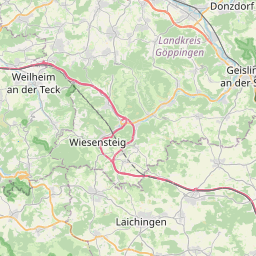






Description: Das Projekt "FP3-BRITE/EURAM 2, Asbestos-Free Materials for Gaskets for Bolted Flanged Connections" wird/wurde gefördert durch: Kommission der Europäischen Gemeinschaften Brüssel. Es wird/wurde ausgeführt durch: Universität Stuttgart, Staatliche Materialprüfungsanstalt.General Information: Bearing in mind rising standards of immission control and restrictions on the use of gasket materials containing asbestos, the proposed project plans to create the basis for a systematic and optimized development of new gasket materials and to provide realistic evidence of the strength and tightness of flanged joints. The main tasks of the project are: - to define and set the relevant gasket factors, - to work out, verify and set the test procedures for the determination of the above mentioned gasket factors, - to determine the gasket factors for asbestos free materials including the sealing and relaxation properties under realistic operation conditions (medium, temperature, time, pressure, changing loads), - to draft out European standards for defining gasket factors under testing procedures as well as specifications for gasket materials, - to create a data basis for a data bank. Apart from improved technological co-operation in Europe, there will be a positive effect on the competitiveness in many areas of industry and improvements in environmental protection and working conditions. Achievements: The main conclusions which can be drawn from the project are the following: - New gasket sheet materials were developed and tests were performed in laboratory conditions. Most of these new materials are distinctly improved in view of e.g. tightening capability, creep strength and load bearing capacity compared to reference materials available on the market at the beginning of the project. - Gasket factors were defined which realistically describe the behaviour of gasket materials and which allow a realistic assessment of the gasket's performance. A gasket factor data bank is prepared. - Optimized gasket testing techniques were developed and fixed which guarantee a realistic assessment and evaluation of gasket's performance in view of tightening capability, load bearing, creep resistance and long term behaviour under the influence of time, temperature and medium and therefore a targeted development of new gasket materials; the description of these testing procedures will be the basis for a CEN standard on gasket testing. These testing techniques were evaluated by comparison of the results received with those of real flanged joint tests. Fairly good agreement was shown between gasket testing and flanged joint tests, so that the testing procedures can be looked as verified. Figures of gasket factors - related to leak rate or tightness - are determined which allow combined with the new European calculation code pr EN 1591 a strength and tightness analysis of flanged joints. These results can be the basis for gasket factor classification in the CEN calculation code per EN 1591.
SupportProgram
Origins: /Bund/UBA/UFORDAT
Tags: Resistenzentwicklung ? Werkstoff ? Asbest ? Ersatzstoff ? Immissionsschutz ? Nutzungsbeschränkung ? Prüfverfahren ? Werkstoffkunde ? Europa ? Datenbank ? Klassifikation ? Wettbewerbsfähigkeit ? Abdichtung ? Umweltschutz ? Neuartige Materialien ? Schadstoffelimination ? Substitutionseffekt ? aerospace technology ? industrial manufacture ?
Region: Baden-Württemberg
Bounding boxes: 9° .. 9° x 48.5° .. 48.5°
License: cc-by-nc-nd/4.0
Language: Englisch/English
Time ranges: 1993-03-15 - 1996-03-14
Accessed 1 times.